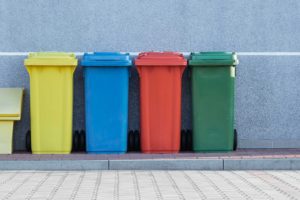
Blog
Behind the Science of Sustainability
As the world focuses on stopping the spread of COVID-19, experts in sustainability are focused on another imminent disaster that could also alter the way we live. The waste and marine debris crisis poses a major threat to our environment, especially now, as residential waste generation sees dramatic increases during the stay-at-home orders and social distancing measures to combat the coronavirus.
Following April’s virtual discussion with leading environmental NGOs, Consumer Brands hosted its second in a series of webinars for the Recycling Leadership Council (RLC), this time hearing from leading academics who are driving important research on the current state and future of waste and recycling. Joined by Dr. Jenna Jambeck from the University of Georgia, Dr. Calvin Lakhan from York University and Dr. Bruce Welt from the University of Florida, the RLC learned firsthand about their research and policy mechanisms, technological advances in recycling and actions to solve the waste crisis.
As of 2017, humans created 8.3 billion metric tons of plastics — the equivalent of 25,000 Empire State Buildings — outgrowing all other man-made materials other than steel and cement. By 2050, that number is expected to reach a staggering 34 billion metric tons. Tragically, much of that plastic ends up where it shouldn’t, in the environment, especially our oceans and waterways. According to Jambeck, an estimated 8 million metric tons of mismanaged plastic waste entered our oceans in just one year.
To address this growing issue, Jambeck is working on the Circularity Assessment Protocol, a framework at the community level to improve the living conditions and health for millions of people around the world, while protecting the oceans. By analyzing consumer behavior, product design, input, use and reuse, collection, leakage and the end of the cycle, the Circularity Assessment Protocol helps inform upstream solutions within individual systems.
To apply the framework in real life scenarios, Jambeck traveled with a team of National Geographic Society researchers from the Bay of Bengal to the Himalayas, spending four months mapping waste leakage into the land and water, as well as identifying what was working well in these areas. The group engaged with 10 local communities to study how items were packaged and how people interacted with them and characterized over 85,000 items on the ground.
“Engaging the communities, empowering them to collect data and really engage on this issue is a big part of what I do,” said Jambeck. “See what’s on the ground, see what you’re producing and really try to understand and engage instead of thinking about it as something gross that we want to go away.”
Next, Lakhan highlighted the importance of understanding goals for the waste management system, before moving forward with costly, unsuccessful solutions that don’t address the underlying issues. One example of this is British Columbia’s Recycle BC program, which is often touted as a “best practice” model of steward-led extended producer responsibility (EPR). However, Lakhan’s research and analysis of the program’s publicly available data found that while program costs increased by more than 20 percent between 2017 and 2018, program performance increased by only one percent. Despite a 7 percent increase in households with curbside collection, the total amount recycled remains unchanged and the amount being sent to landfills has increased.
“The public now recognizes that waste management has a critical role to play in the fight against climate change,” said Lakhan. “We have to understand that waste management is not just an environmental issue — it’s an economic issue and also very much a social issue.”
Welt closed out the conversation by discussing advancements in packaging and how we need to think about the future of recycling moving forward, especially new technologies.
“We have to recognize that our whole idea of reduce, reuse, recycle has really failed,” he said. “Our current system of recycling is really just delaying the inevitable path to a landfill.”
His perspective is that today’s recycling process takes items and turns them into a low-grade polymer, which has limited use and a lower market value. Welt noted that true circularity can be achieved when the end product from recycling is higher quality, has broader applications and therefore more value. His research is on technology that turns the original material into hydrogen and carbon monoxide, or syngas. The syngas can then be turned into methanol, which is identical to the virgin material that typically comes from fossil fuels, creating a high-value market for recycled material. While this technology is still new and in development, the Ellen MacArthur Foundation published a white paper showing the ability to track and certify the recycled content in the methanol, which can help track progress toward recycling rate and packaging recycling goals.
“With this type of technology, which is very robust and very flexible, we don’t have to ask the consumer to sort their trash. We just have to ask them not to litter,” Welt said.
The future of sustainability is hopeful, but there will be challenges ahead, and time is running out to reduce marine debris and improve the health of our environment. Addressing recycling will not solve all packaging challenges, but it’s a critical and foundational element of any solution. Alongside the members of the RLC, the Consumer Brands Association is committed to finding scalable solutions to keep packaging out of the environment and find new life for that valuable material; solutions that will work for us all — from the smallest villages to the biggest cities.
Published on May 18, 2020



